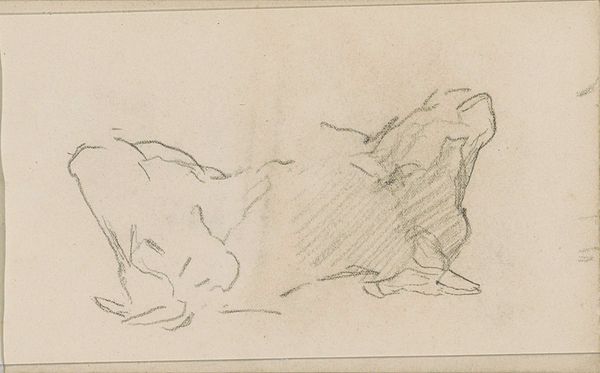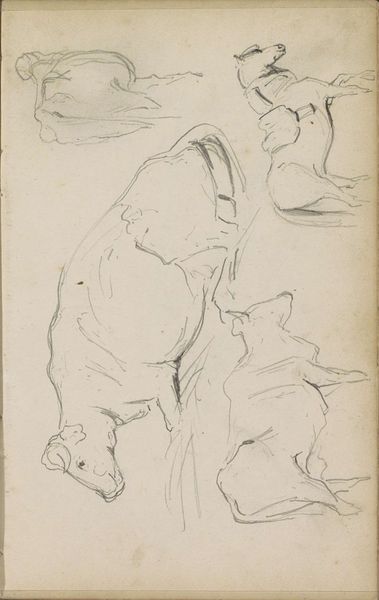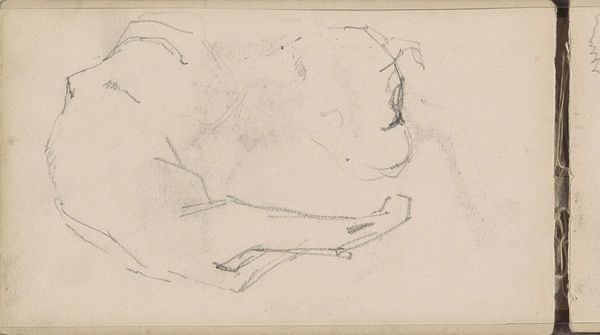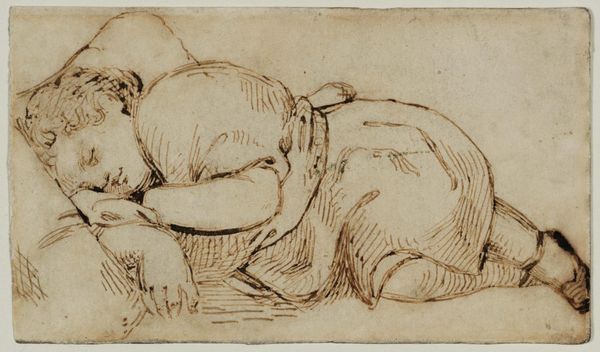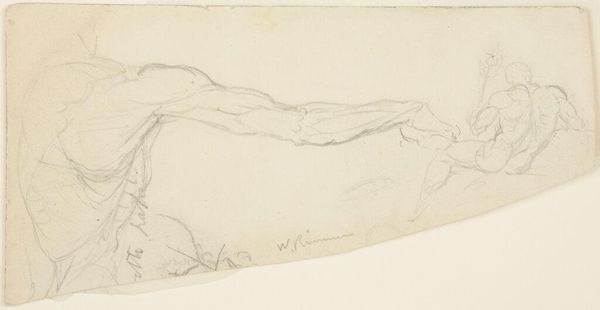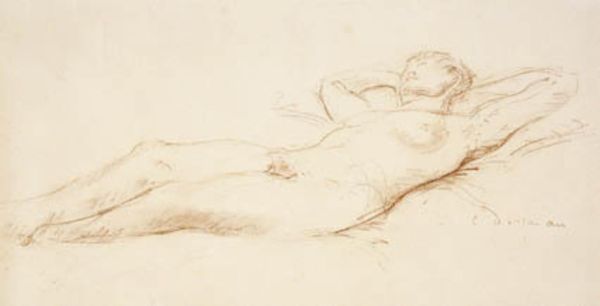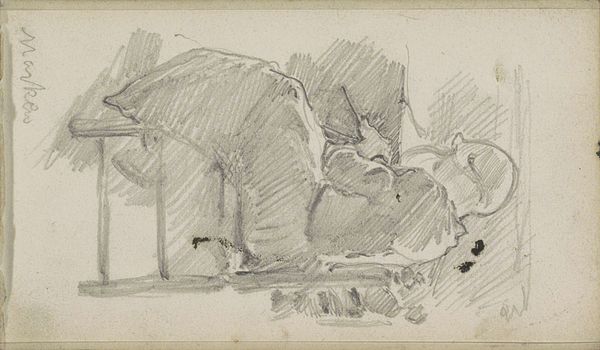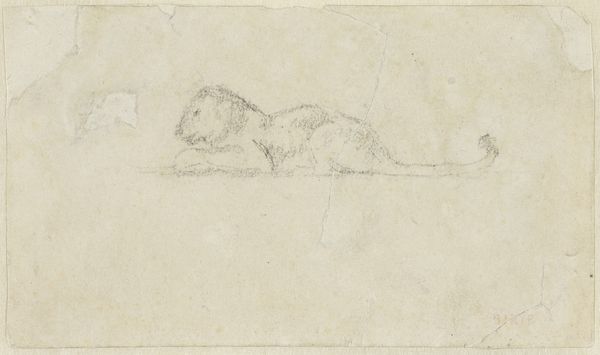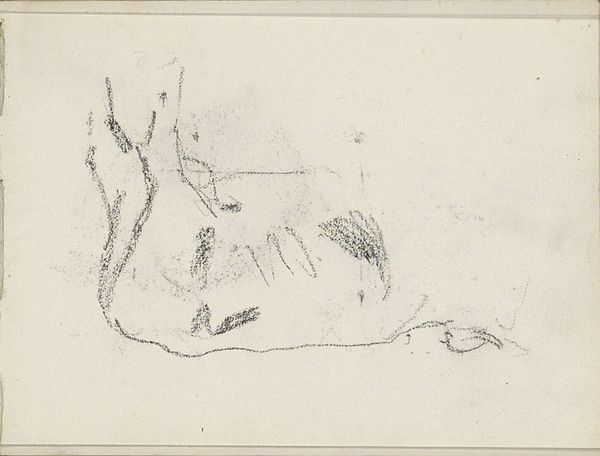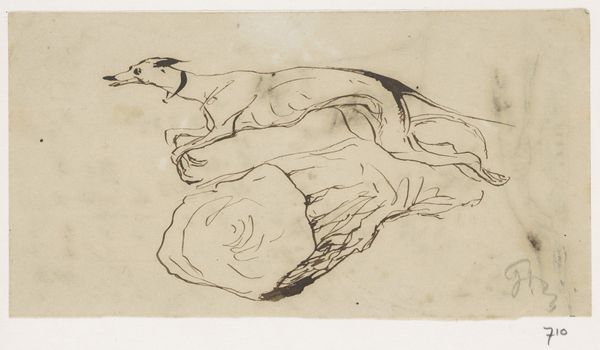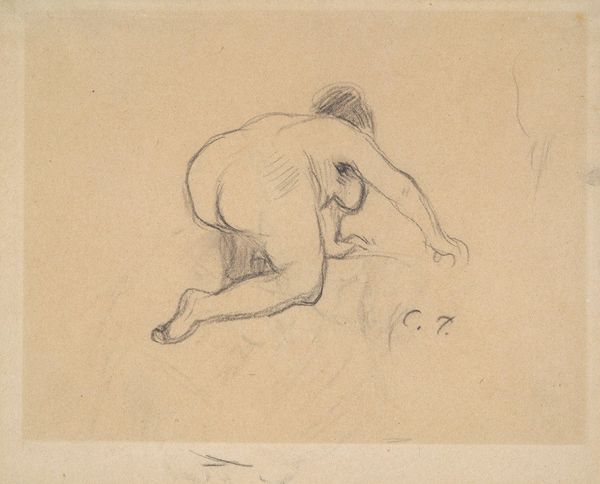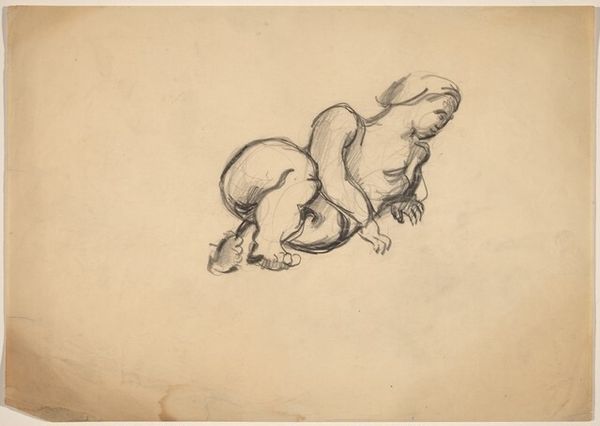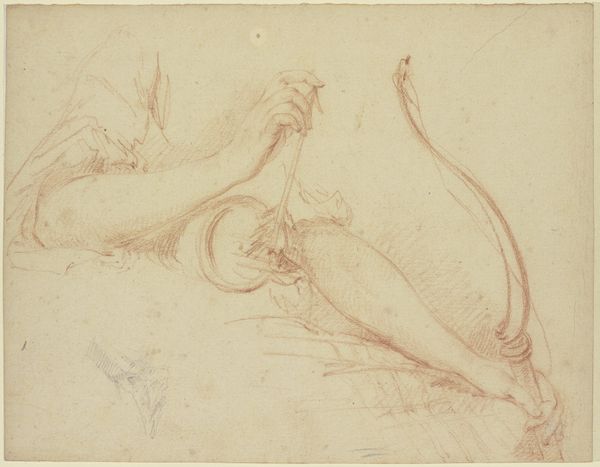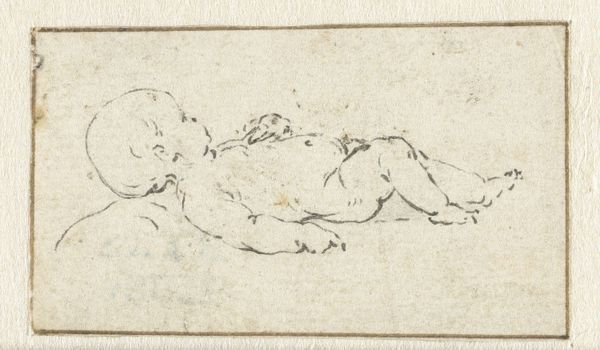
drawing, print, etching
#
drawing
# print
#
etching
#
figuration
#
nude
Copyright: National Gallery of Art: CC0 1.0
Editor: Here we have Thomas Browne Cornell’s "Sleeping Man," an etching made in 1961. The figure’s pose is intriguing and a bit disorienting. What’s your take on this composition? Curator: What is striking about this piece is the formal arrangement, the horizontal orientation which emphasizes the supine figure, but also note how the etching medium itself creates an intricate system of lines and textures across the plate. Consider how the composition guides the eye. Is it linear or planar? Does it emphasize shape or mass? Editor: It feels very planar. I’m drawn to the sharp contrast between the deeply etched lines of the figure's form and the sketchier marks elsewhere. How does that inform your reading? Curator: That interplay of precise and gestural marks speaks to a concern with defining form through both meticulous control and spontaneous expression. Do you notice how this contrast invites a deeper investigation of figure-ground relationship, making us question the solidity and permanence of the body? Editor: Yes, I do. The contrast gives the figure a real sense of weight, and makes the pose much more dramatic. How important is the concept of "form" itself in a work like this? Curator: Incredibly so. By rigorously examining the work’s formal elements – line, tone, texture, composition – we can begin to understand not just what is represented, but *how* meaning is constructed through the interplay of those very elements. A certain level of objectivity is therefore reached that can yield interesting interpretations. Editor: So, less about what the artist *intended,* and more about what the artwork *itself* communicates? Curator: Precisely. The formal qualities are not merely descriptive but active agents in the construction of meaning. It's been enriching to delve into this work with you today. Editor: Definitely. I appreciate how you helped me look beyond the subject matter and into the language of the artwork. Thanks!
Comments
No comments
Be the first to comment and join the conversation on the ultimate creative platform.
